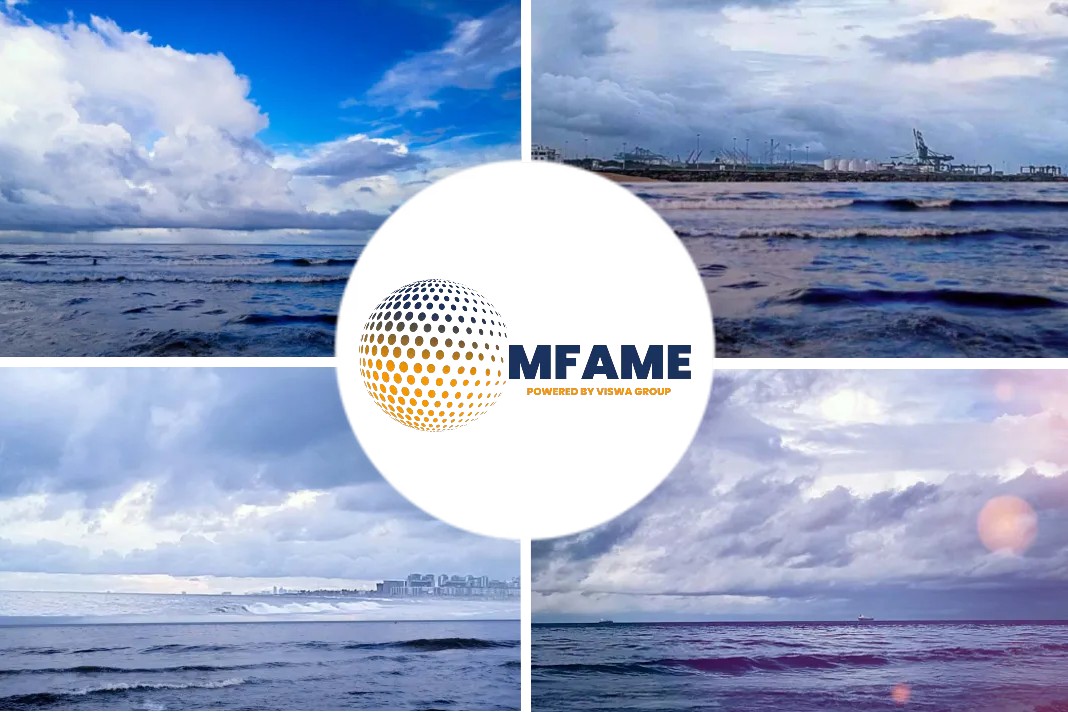A spate of recent container losses due to container stack collapses has brought increased scrutiny to container ship loading and design. These container incidents represent a safety threat to the crew, ship and the environment, and significant financial losses for shippers and insurers. A large container ship carries assets worth in excess of US$1Bn, says an article published in riviera.
Boxes Labelled As Dangerous Cargo
The roles of severe weather, parametric rolling, synchronous rolling, increasing vessel size, cargo stowage, improper lashing and securing, and misdeclared goods are all being closely examined.
Additionally, the misdeclaration of dangerous cargoes is suspected in a number of container fires. Apart from refrigerated containers and those boxes labelled as dangerous cargo, the crew – a ship’s primary safety system – has little knowledge of the contents of the containers on board a ship.
Reported Data
Examining the reported data, less than one thousandth of a per cent of containers were lost at sea on average over the last 12 years. This represents 1,382 out of 226M containers lost annually, according to survey data collected by the World Shipping Council since 2011. This average includes the outlier year of 2013 when well over 5,000 containers were lost – 4,293 of which were due to MOL Comfort’s sinking.
More recently, on 30 November last year, ONE Apus lost 1,816 containers overboard after a catastrophic stack collapse in heavy weather off Japan and on 17 February this year, Maersk confirmed the loss of 260 containers overboard from Maersk Eindhoven after the vessel’s engine stopped in heavy weather near Japan.
The 2010-built, 13,100-TEU ship was en route from Xiamen, China, to Los Angeles, California.
Investigating The Accident
Maersk reported it was investigating the accident – with preliminary findings indicating that an engine stoppage and loss of manoeuvring in rough seas lead to severe rolling.
Some insight into container losses was offered in February by Liberian Registry senior vice president, marine operations Thomas Klenum during Riviera’s Container ship safety by design, not accident webinar. He points out that since 1969, container ships have grown in capacity by 1,500%.
“This enormous growth in capacity has had a huge impact on design principles,” says Mr Klenum. “The static and dynamic forces acting on the hull and containers are much different on a 1,500-TEU container ship than one carrying 24,000 TEU.”
Goal Based Standards
He notes the current regulatory environment – incorporating goal-based standards and risk-based approvals – has evolved from the traditional prescriptive rulemaking environment to allow innovation in ship design.
This means compliance can be attained by offering an equivalent level of safety as that of a prescriptive requirement.
Mr Klenum attributes some of the recent container losses to improper securing and lashing and to vessels being operated outside their design parameters.
Beyond modifications to vessel design, one of the weapons available to battle container losses is increasing decision-support tools for masters.
Metocean Tools and Technology
Recent advancements in vessel motion forecasting – metocean tools and technology – could help operators anticipate and avoid dangerous rolling conditions.
“Rolling is one of the main causes of container damage and loss,” DTN senior vice president for weather Mike Eilts says. “A ship severely rolling due to a combination of the timing of waves passing through the vessel and the ship’s natural roll parameter can cause cargo damage, loss of cargo, and in extreme cases, capsize the ship.”
Particularly Affect Container Ships
This parametric rolling can particularly affect container ships due to their design, hull size, wide beam and maximum cargo capacity.
Vessel motion forecasting combines atmospheric, oceanic and wave spectra to predict the ship’s motions, such as pitch, roll and the impact of the waves minutes before it occurs.
“It can optimise the vessel’s performance during the voyage and aid in critical seakeeping decisions when confronting choppy seas,” says Mr Eilts.
“With the right data and insights, the maritime industry will have the best operational intelligence to reduce incidents that threaten cargo or crew safety.”
Did you subscribe to our daily newsletter?
It’s Free! Click here to Subscribe!
Source : riviera




















Why are you loading with the narrow slide facing the rolling? Load across the ship center line and it will be much more stable